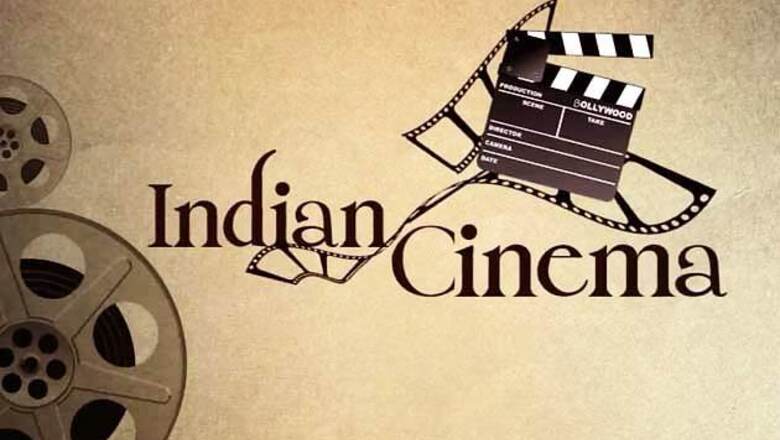
views
New Delhi: Hrishikesh Mukherjee made the surname Bhatavdekar memorable in his 1983 film 'Rang Birangi' in which the legendary Utpal Dutt played the character of inspector Dhurandar Bhatavdekar, but there was another Bhatavdekar who made a name for himself in the nascent era of Indian cinema.
The forefathers:
Harishchandra Sakharam Bhatavdekar aka Save Dada, was an insightful filmmaker who made the first Indian motion picture. As expected, Lumiere brothers were his inspiration. Sooner or later, somebody had to start filmmaking in India and Save Dada set the ball rolling before anyone else. Bhatavdekar made the first Indian motion picture 'The Wrestlers' four years after Lumiere Brothers' presentation of 'La Sortie de l'Usine Lumiere A Lyon' (The Exit From the Lumiere Factory in Lyon) in 1895.
It was his initiative that inspired the maverick cinema-man Dhundiraj Govind Phalke to come up with 'Raja Harishchandra' in 1913, which is termed as the first full length Indian feature film. Leave aside his record of making more than 120 short and full length films in a span of 19 years, the man went on to establish many social theories.
It were the projects pioneered by Phalke that carved a niche audience base for mythological content, no wonder 'Devon Ke Dev Mahadev' gave 'KBC 6' a stiff competition for TRPs. 'Lanka Dahan', 'Kaliya Mardan', 'Gangavataran', 'Mohini Bhasmasur', you just name it and you would find a film by Dadasaheb on that theme. Some experts think that the evolution of sound as a mode of expression became the reason of Phalke's obsoleteness but probably it had to do more with the changing pattern of content.
No apolitical business:
Hiralal Sen might have craved for financial and critical success during the later stage of his career but nobody can snatch his reputation as India's first political filmmaker. His film based on anti-partition movement is regarded as an authentic political documentation. Jamshedji Framji Madan was another illustrious and industrious filmmaker of that period.
The Shantaram effect:
The social reform movements had started gaining currency and filmmakers such as Shantaram Rajaram Vankudre, popularly known as V Shantaram, were on an experimentation spree to figure out the real taste of the common film audience. He directed films based on a wide range of subjects but with 'Amar Jyoti' and 'Duniya Na Mane', perfected a basic idea about what sort of films to make. 'Dr Kotnis Ki Amar Kahani' (1946) was the culmination of this quest in which he took a clear cut stand, which was significant due to the timing of its release.
There was another very important film personality of pre-independence period who was born in the same month and year as V Shantaram.
The founder of Prithvi Theatre, Prithviraj Kapoor started his career with 'Be Dhari Talwar' (1929) as an actor and his presence on the screen was cherished by the audience like never before. Going by the cultural scenario of 1920s and 30s, he could be termed as the initial superstar of Indian films.
A 6'2" tall burly man became the master of invoking emotions via films like 'Alam Ara', 'Phool' and 'Ishara'. 'Paisa' was his foray into direction but it was his plays that found him prominence among other storytellers. Prithvi Theatre was the flag-bearer of change and Prithviraj was its emblem. He even played himself more than 20 times on screen.
Forming a film company wasn't a big deal:
Dhirendra Nath Ganguly or DG had a different approach to filmmaking as he believed in the organised structure of the film business. Such a mindset drove him to found a film company called Lotus Film Company in Hyderabad.
However, his vision didn't matter much for the rulers of Hyderabad who chased him away from the city for the crime of supporting a film called 'Razia Begum'. But, as they say if there is a will, there is a way, so DG collaborated with Pramathesh Barua and started another company called British Dominion Films.
It was a smart move because it was set to bloom in future because of its English connection but the company doomed as some other companies took the centre-stage in the beginning of the talkie era. Never say die attitude restricted DG from hanging his boots and the man joined hands with Barua and BN Sircar's New Theatres.
This proved to be a beneficial development for Bengali films as it brought the Calcutta based film industry some already established filmmakers. New Theatres was built on the experience gained by Sircar during his long career in films in which he had worked with directors like Premankur Atorthy and Debaki Bose.
Regressive vs progressive:
Though the Indian freedom struggle was not as prominent a theme as caste based discrimination or unconditional devotion to god but it received attention from different film industries.
Sohrab Merwanji Modi and V Shantaram tried their bit to establish patriotic films but it seems the time was not as ripe as it would be after 20 years when a whole bunch of macho-men like Dharmendra, Amitabh and Vinod Khanna went full throttle against the obvious enemies. Sohrab Modi's Minerva Movietone produced 'Pukar' and 'Sikandar' around 1940 which propagated the sense of unchained freedom in a different way.
Heavy-duty dialogues and grand sets were there to supplement the notion of freedom wrapped in films based on historical facts. This way, Modi avoided the controversy as well as fuelled the popular mindset against an oppressive regime. Minerva's films might not be hugely successful but they definitely set the tone for future. Sohrab Modi emerged as an important filmmaker when some foreign critics chose to spot similarities between his films and some of the world classics, in fact an expert compared 'Sikandar' with 'The Birth of a Nation'.
The kiss:
Nobody other than a dedicated artist like Himanshu Rai could have dared to kiss on screen way back in 1933. Rai appears to be very clear in his mind about the motives of filmmaking as he remained in the hunt for subjects that could bring out the changing sensibilities of his time. Be it 'Jawani Ki Hawa' or 'Savitri' or 'Achhoot Kanya', Himanshu Rai promoted modern notions about sexuality, gender roles, caste based distinctions and film as a business tool.
His personal life reflected the ideologies he followed about personal space and art for the art's sake. He was also significant in creating a methodical star in Ashok Kumar, who later gave a mammoth hit in the form of 'Kismet' in 1943, however it was made after Rai's death in 1940, Rai's partner Sashadhar Mukherjee directed the film. Mukherjee could have tried to take Rai's legacy forward but his endless conflicts with Himanshu Rai's widow Devika Rani forced Mukherjee to quit Bombay Talkies and form Filmistan.
Tamil Nadu:
Despite giving a lot of importance to mythological themes Indian films couldn't be generalised as the promoters of regressive stories. The idea was to depict the supremacy of gods but with a sense of undying hope and immense faith in human efforts. What Ardeshir Irani did for Bombay-based films, Krishnaswami Subrahmanyam did for Tamil cinema. 'Pavalakkodi' and 'Sevasadanam' supported the Tamil film industry during 1930s and paved its way to become the second largest revenue generating film industry in India. Similarly, Hanumappa Muniappa Reddy made 'Bhakt Prahalada' (1931), South's first talkie in Telugu. Reddy worked as an assistant to Ardeshir Irani and shouldered the responsibility of making a platform for talkies in South.
Andhra Pradesh:
With 'Eega', Telugu cinema has touched a new level of perfection. It demonstrated the power of imagination, and huge commercial success reflected the popular support for the forward looking filmmakers but coming to such a stage was never an easy deal. Raghupathi Venkaiah Naidu, popularly known as the father of Telugu cinema, initiated this change during 1920s. Naidu was a photographer and a theatre owner besides being a filmmaker. This suggests about his subtle understanding of film business, however he had to sell off a good part of his property later in his life. He also dreamt of a better future of filmmaking as he sent his son abroad to learn quality cinematographic techniques.
Assam
Jyoti Prasad Agarwala is considered as a culture icon in Assam but one can imagine the tight rope he had to walk during the making of 'Joymati' in 1935, but the man stood his ground and today the state celebrates 'Shilpi Divas' in his honour on January 17, his death anniversary.
Gujarat
Though Gujarati cinema is still struggling to get a solid footing like Bhojpuri films in terms of money generating capacity but Chaturbhuj Joshi contributed to put the foundation for Gujarati films with 'Secretary' in 1938. Is it really surprising to see Big B producing films in Gujarati! Bhojpuri filmmakers took extra time in coming up with 'Ganga Maiya Tohe Piyari Chadhaibo' (1962), however the market for Bhojpuri films seems to be increasing at a better speed than the Gujarati film market.
Kerala
The Malayalam film industry knows the art of producing progressive films with the right mix of 'masala'. JC Daniel Nadar, credited to be the first filmmaker from Kerala, also set up a studio which gave a drive to the people interested in cinema, he also acted in 'Vigathakumaran' and did most of the production work. Daniel drifted away from mythological subjects to provide a platform for films with an eye on future. The Malayalam film industry looked forward after him and several socially relevant films took shape on the celluloid.
The Indian film industry has grown in leaps and bounds and is aiming for international markets and awards shows. The show of self assurance was possible because our foundation was so sound - laid by generations of brave men who started with a dream.####




















Comments
0 comment